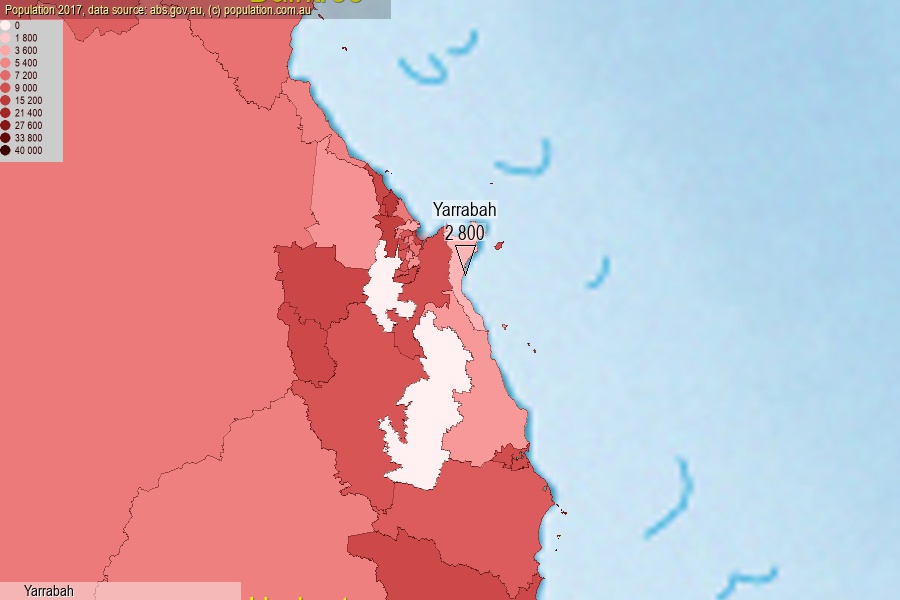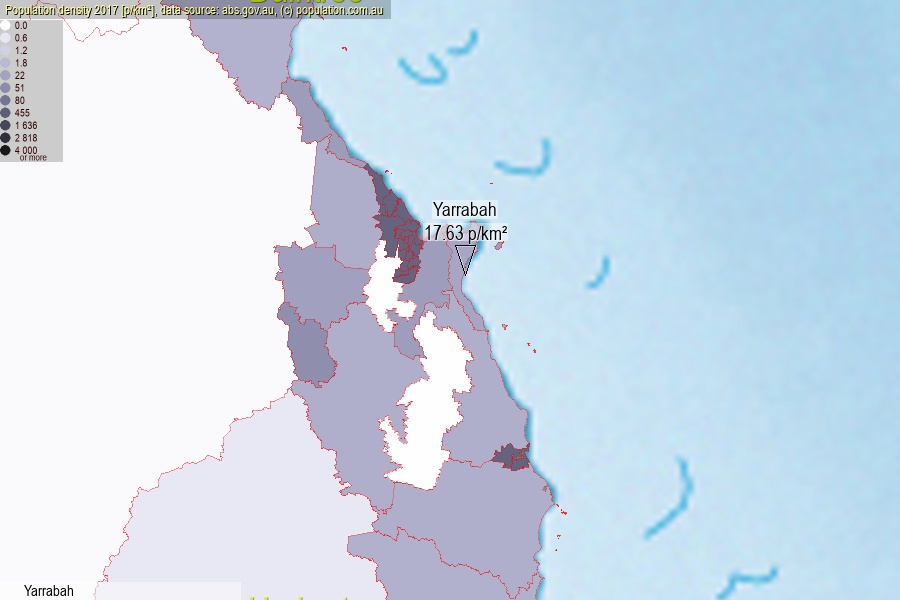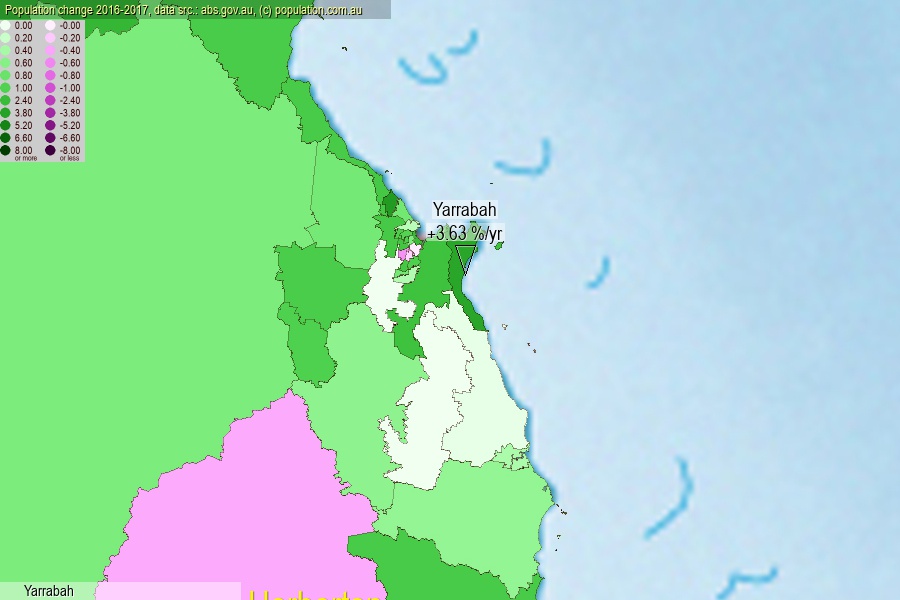 population.com.au
population.com.auLast official estimated population of Yarrabah (as Statistical Area Level 2) was 2 800 people (on 2017-06-30)[2]. This was 0.01% of total Australian population and 0.056% of QLD population. Area of Yarrabah is 158.80 km², in this year population density was 17.63 p/km² . If population growth rate would be same as in period 2016-2017 (+3.63%/yr), Yarrabah population in 2025 would be 3 723. [0]



Click to enlarge. Yarrabah is located in the center of the images.
Population [people], population density [p./km²] and population change [%/year] [2]
View borders » (new window) [4]
[1991-1992] +1.32 %/Yr.
[1992-1993] +1.57 %/Yr.
[1993-1994] +1.29 %/Yr.
[1994-1995] +1.17 %/Yr.
[1995-1996] +1.40 %/Yr.
[1996-1997] +2.72 %/Yr.
[1997-1998] +2.31 %/Yr.
[1998-1999] +1.98 %/Yr.
[1999-2000] +1.94 %/Yr.
[2000-2001] +1.27 %/Yr.
[2001-2002] +1.88 %/Yr.
[2002-2003] +1.98 %/Yr.
[2003-2004] +1.81 %/Yr.
[2004-2005] +1.90 %/Yr.
[2005-2006] +2.41 %/Yr.
[2006-2007] +1.22 %/Yr.
[2007-2008] +1.32 %/Yr.
[2008-2009] +0.16 %/Yr.
[2009-2010] +2.09 %/Yr.
[2010-2011] +0.27 %/Yr.
[2011-2012] +1.85 %/Yr.
[2012-2013] +1.63 %/Yr.
[2013-2014] +0.30 %/Yr.
[2014-2015] +0.04 %/Yr.
[2015-2016] +0.26 %/Yr.
[2016-2017] +3.63 %/Yr.
[0] Calculated with linear interpolation from officially estimated population
[1] Read more about SA2 and Australian Statistical Geography Standard (ASGS) on abs.gov.au
[2] Population data from Australian Bureau of Statistics (Population and density: 2017; change: 2016-2017)
[3] Digital Boundaries: Australian Statistical Geography Standard (ASGS) 2016.
[4] Border coordinates are simplifyed using Ramer-Douglas-Peucker algorithm.